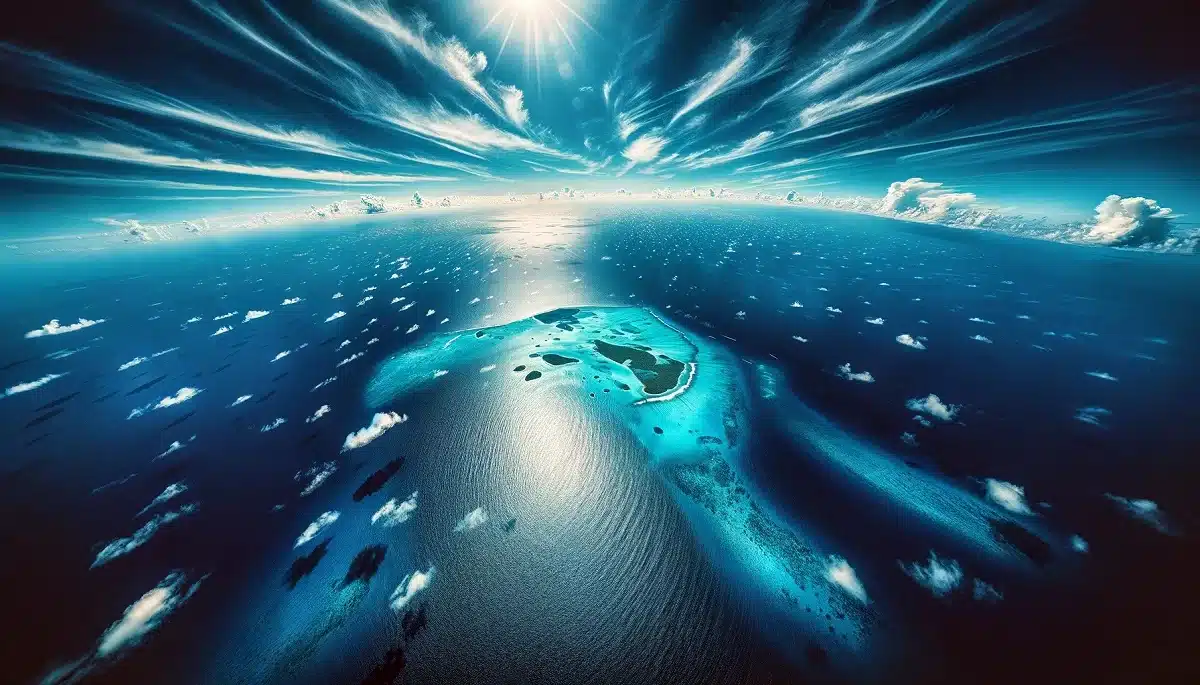The Pacific Ocean, recognized as the world’s largest and deepest ocean, encompasses numerous unique islands and archipelagos. In this article, we will delve into some of the significant islands found within the Pacific Ocean and elaborate on their notable features.
The islands and island nations within the Pacific Ocean are meticulously examined, considering their areas, affiliations with specific countries, and unique characteristics. The Pacific Ocean, being the most expansive and profound ocean globally, houses numerous islands and island states. This article aims to shed light on the geographical, cultural, and economic aspects of these magnificent islands.
Islands and Island Nations in the Pacific Ocean
The Pacific Ocean is considered the largest and deepest ocean on Earth, covering approximately 30% of the planet’s surface and containing many islands and island nations. The islands found in the Pacific Ocean are often recognized as independent island nations or known as parts of larger countries. These islands are renowned for their natural beauty, rich cultural heritage, and distinctive lifestyles.
1. Hawaiian Islands
Hawaii is an island chain located in the northern part of the Pacific Ocean and belonging to the United States. These islands of volcanic origin are famous for their rich flora and fauna, impressive volcanic mountains and crystal clear waters.
- Biodiversity: Hawaii is home to one of the most isolated ecosystems in the world. This island has magnificent natural parks and protected areas, as well as rare species of plants and animals.
- Culture: Hawaii’s unique culture is distinguished by its traditional dances, music and festivals.
- Economy: Tourism is the engine of Hawaii’s economy. The island generates a large income by hosting millions of tourists every year.
2. Fiji Islands
Fiji is a country of more than 300 islands located in the South Pacific. It is known for its tropical climate, magnificent beaches and friendly people.
- Natural Beauty: Fiji is full of natural wonders such as coral reefs, waterfalls and tropical forests.
- Culture: Fijian culture is rich with the island’s traditional village life, music, dance and crafts.
- Economy: Fiji’s economy is based on sugar cane production, fishing and especially tourism.
3. New Zealand
New Zealand is a country located in the southwestern Pacific Ocean and consists of two main islands (the North Island and the South Island). It is known for its mountainous terrain, deep fjords and rich Maori culture.
- Scenic Landscapes: New Zealand’s mountainous landscapes, green valleys and long coastlines are ideal for nature lovers.
- Maori Culture: Maori, the indigenous people of New Zealand, have greatly shaped the cultural structure of the country.
- Film Industry: New Zealand is also famous for being the location where many famous movies and TV series were shot, especially the “Lord of the Rings” series.
4. Galapagos Islands
Galapagos is a group of islands in Ecuador famous for its biodiversity. These islands, which inspired Charles Darwin’s theory of evolution, are known for their endemic species.
- Wildlife: The Galapagos islands are home to unique animal species; these include Galapagos tortoises and iguanas.
- Conservation Efforts: The islands are protected by a set of strict laws to protect the fragile ecosystem.
- Tourism and Research: The Galapagos is a popular destination for scientists and tourists.
5. Solomon Islands
Solomon Islands is a country located in the South Pacific and consisting of hundreds of islands. II. These islands, which played an important role during World War II, today attract attention with their natural beauty and rich cultural history.
- Date: Solomon Islands, II. It witnessed important battles in World War II, which shaped the history and culture of the islands.
- Natural Diversity: The islands are rich in biodiversity, with dense tropical forests, diverse marine life and coral reefs.
- Cultural Heritage: Traditional tribal life continues to be part of the daily life of the islanders and preserves a rich folkloric heritage.
6. Palau
Palau is an island nation of more than 500 islands in the Western Pacific. Known for its coral islands and abundant marine life, Palau is a popular destination for diving and nature tourism.
- Natural Beauty: Palau’s crystal clear waters, colorful coral reefs and rich marine life are renowned worldwide.
- Culture: Palauan culture is rich with traditional ceremonies, music and art.
- Environmental Protection: Palau is known as a pioneer of marine protected areas and has strict laws to protect marine life.
7. Samoa
Samoa is a country located in the South Pacific and consists of two main islands and several smaller islands. Samoa, where traditional Polynesian culture is strongly kept alive, is known for its natural beauty and friendly people.
- Natural Landscapes: Samoa is a natural paradise with volcanic mountains, waterfalls and pristine beaches.
- Culture and Traditions: In Samoa, traditional lifestyle, tribal leadership and solidarity within the community have an important place.
- Tourism: Samoa attaches importance to sustainable tourism and offers visitors an experience in touch with nature.
8. Arrived
Tonga is a kingdom of more than 170 islands in the South Pacific. It attracts attention with its unique monarchical structure and strong Polynesian culture.
- Monarchy: Tonga has the distinction of being the only still existing monarchy in the Pacific, which significantly influences the cultural and political structure of the country.
- Natural Beauty: Tonga’s volcanic islands, hot springs and pristine beaches are rich in natural beauty.
- Whale Watching: Tonga lies particularly on the migration route of humpback whales, making the island a popular destination for whale watchers.
9. Vanuatu
Vanuatu is a country located in the South Pacific and consists of approximately 80 islands. It is famous for its volcanoes, hot springs and rich cultural heritage.
- Volcanic Activity: Vanuatu is known for its active volcanoes, and these volcanoes shape the island’s geography and ecosystem.
- Cultural Diversity: Vanuatu is a cultural mosaic where more than 100 indigenous languages are spoken and traditional lifestyles are preserved.
- Ecotourism: Vanuatu promotes sustainable tourism and protects its natural beauty.
10. Marshall Islands
The Marshall Islands are a country located in the North Pacific and consisting of 29 atolls and 5 islands. Its strategic location and II. It is known for its history of World War II.
- Marine Life: The Marshall Islands are a popular spot for divers with their rich coral reefs and marine life.
- History: Islands, II. It played an important role during World War II and is home to many historical ruins.
- Climate Change: The Marshall Islands are vulnerable to the effects of climate change and seek to raise international awareness of this issue.
11. Federated States of Micronesia
The Federated States of Micronesia is a country comprising more than 600 islands and atolls in the North Pacific. It is known for its cultural diversity and marine ecosystems.
- Cultural Heritage: Micronesia has a rich culture with traditional arts, crafts and architecture.
- Natural Beauty: The islands are famous for their tropical forests, waterfalls and crystal clear waters.
- Marine Biodiversity: Micronesia offers excellent conditions for diving and snorkeling, and efforts to preserve marine biodiversity are important.
12. Kiribati
Kiribati is a country located in the Central Pacific and consisting of 33 atolls and one island. The fact that it consists of low-altitude atolls increases its vulnerability to climate change.
- Cultural Authenticity: Kiribati is noted for its unique dances, music and traditions.
- Environmental Challenges: Islands are vulnerable to environmental threats such as sea level rise and erosion.
- Fishing: Kiribati’s economy is based primarily on tuna fishing, and sustainable fishing is important.
These islands in the Pacific Ocean are known and valued worldwide, each with their own unique characteristics, rich cultural history and unique natural beauty. The protection and sustainable management of these islands is of great importance both regionally and globally.





